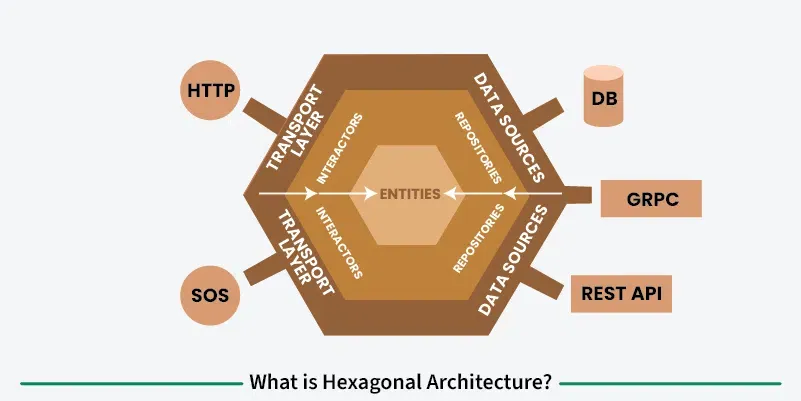


Ever built a SaaS product where each new customer wants “just one tiny change”… and suddenly everything starts falling apart?
It always seems harmless at first.
And you think, “No problem — I’ll toss in a few conditionals and move on.”
And it works… until it doesn’t.
Before you know it, a change for Client G breaks a feature for Client C. You’re digging through layers of if statements, feature flags, and scattered logic, trying to figure out where it all went sideways.
Now every deployment feels risky. Onboarding a new tenant is stressful. And you keep telling yourself, “It’s just one more special case…” — while the codebase turns into a fragile mess.
The real problem isn’t the custom features — it’s where that logic ends up living.
When you embed tenant-specific behavior directly into your core codebase, everything becomes tightly coupled. A feature for one client can unintentionally ripple into another. Scaling slows down. Testing turns chaotic.
The architecture wasn’t designed to embrace change — it was built for uniformity. But in the world of multi-tenant SaaS, uniformity is the exception, not the rule. You don’t just need functional code — you need a foundation that adapts and grows with your product.
So how do you fix this without rewriting your entire app or copy-pasting logic across a dozen tenants?
The answer: Plugin Architecture.
Here’s the idea:
Instead of hardcoding every tenant’s quirks into your main application, you let each client provide their own behavior — as modular, plug-and-play components. Your core stays clean, while custom logic lives where it belongs: outside the core.

The core system stays clean and focused on the shared functionality. Each plugin handles the custom behavior for just that tenant. No more if-else pyramids. No more regression chaos.
You expose extension points in your application — kind of like saying: “Hey plugin, do you want to do anything before this leave request gets processed?”
Then, for each tenant, you load their plugin dynamically and let it hook in only where needed.
It’s the same idea behind how VS Code handles extensions or how payment gateways let you integrate custom fraud detection.
And the best part?
You don’t have to change the core logic every time a new tenant comes on board. Just drop in a new plugin — and you’re done.
Now you might be thinking — “Okay, sounds neat… but what actually makes plugin architecture better than just writing more conditions?”
Let’s break it down.
In short, Plugin architecture shifts your code from rigid and reactive to flexible and proactive. It’s not just cleaner — it’s sustainable.
To make this more concrete, imagine you’re building a multi-tenant employee management system — a classic SaaS scenario.
The core app handles the essentials:
All pretty standard… at first.
Then the custom requirements start rolling in:
And just like that, you’re buried in conditionals and scattered logic — unless you break the pattern with plugins.
We’ll design our system so the core platform exposes hooks, and each client’s custom behavior lives in a plugin.
Let’s look at some simple code.
The Core Leave Service (leaveService.ts)
type LeaveRequest = {
employeeId: string;
role: string;
status: string;
workflow?: string[];
};
type PluginHook = (request: LeaveRequest) => void;
class LeaveService {
private plugins: Record<string, { beforeSubmit?: PluginHook }> = {};
registerPlugin(tenantId: string, plugin: { beforeSubmit?: PluginHook }) {
this.plugins[tenantId] = plugin;
}
submitLeaveRequest(tenantId: string, request: LeaveRequest) {
// Let the plugin modify the request first
const plugin = this.plugins[tenantId];
if (plugin?.beforeSubmit) {
plugin.beforeSubmit(request);
}
// Default core behavior
if (!request.status) {
request.status = 'pending';
}
console.log(`Leave request for tenant '${tenantId}':`, request);
return request;
}
}
export default LeaveService;
Client A Plugin (clienatA.ts)
export const clientAPlugin = {
beforeSubmit: (request) => {
if (request.role === 'intern') {
request.status = 'approved'; // Auto-approve interns
}
}
};
Client B Plugin (clientB.ts)
export const clientBPlugin = {
beforeSubmit: (request) => {
request.workflow = ['manager', 'hr']; // Custom 2-step approval
}
};
Putting All Together (index.ts)
import LeaveService from './leaveService';
import { clientAPlugin } from './clientAPlugin';
import { clientBPlugin } from './clientBPlugin';
const leaveService = new LeaveService();
// Register tenant-specific plugins
leaveService.registerPlugin('client-a', clientAPlugin);
leaveService.registerPlugin('client-b', clientBPlugin);
// Sample leave requests
const requestA = { employeeId: 'E123', role: 'intern', status: '' };
const requestB = { employeeId: 'E456', role: 'full-time', status: '' };
leaveService.submitLeaveRequest('client-a', requestA);
// → Auto-approved because it's an intern
leaveService.submitLeaveRequest('client-b', requestB);
// → Assigned a custom workflow: ['manager', 'hr']
What Just Happened?
And the best part?
If Client D shows up tomorrow with a wild new requirement… you just write one new plugin. That’s it.
So now you’re probably wondering: “This looks great… but how do I know when to actually use it?”
Plugin Architecture isn’t something you drop into every project. But in the right situations, it can completely change the game.

Here’s how to recognize those moments.
If you’re thinking, “Is this just a clever coding hack, or part of a larger architectural strategy?” That’s the right question to ask.
The plugin pattern isn’t just about cleaning up your code — it’s a powerful design approach that aligns with core architectural goals like scalability, maintainability, and adaptability. It complements and fits naturally within broader system patterns. Here are a few architectures that pair well with a plugin-based approach:

At its core, the Plugin Pattern is about building for flexibility and long-term growth.
It’s more than just a clean way to organize code — it’s a strategic approach to designing software that can evolve alongside your business and adapt to diverse client needs.
By isolating tenant-specific behavior into modular plugins, you keep your core codebase stable and focused. This reduces the risk of unintended side effects, supports team autonomy, and allows features to be developed and deployed independently. The pattern aligns well with architectural styles like modular monoliths, hexagonal architecture, and microkernel designs — all of which promote separation of concerns, extensibility, and domain isolation.
Because in the end, good code isn’t just about working — it’s about scaling. If you’re building a multi-tenant SaaS platform that needs to keep pace with growing complexity, the Plugin Pattern gives you a powerful, practical foundation for sustainable growth.